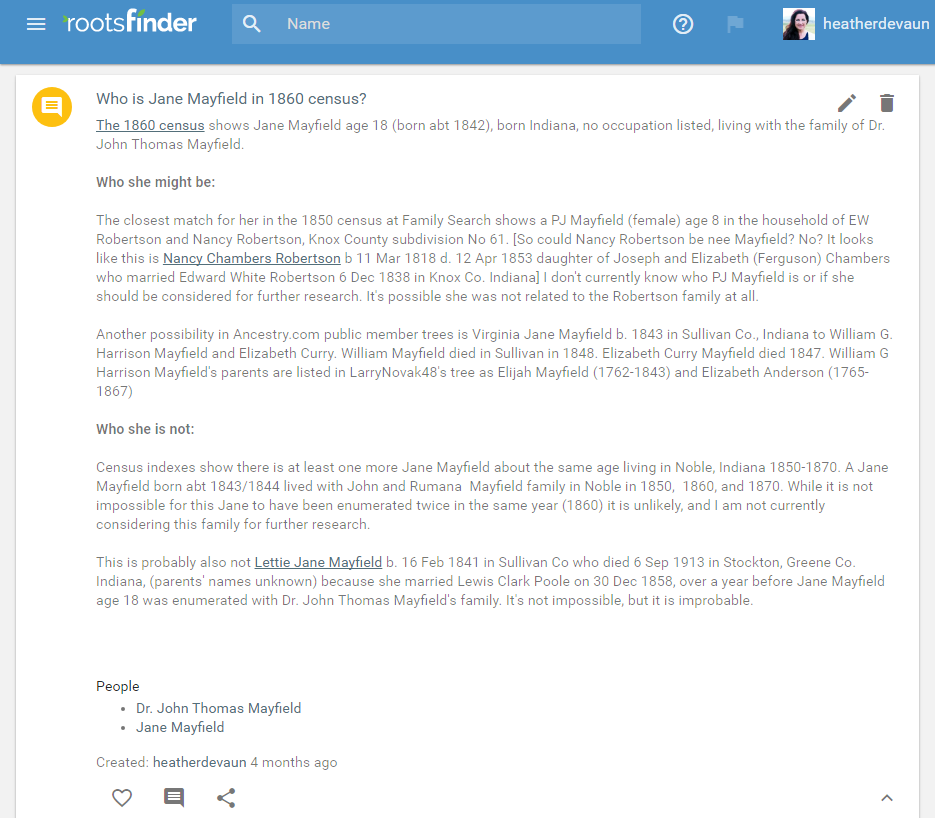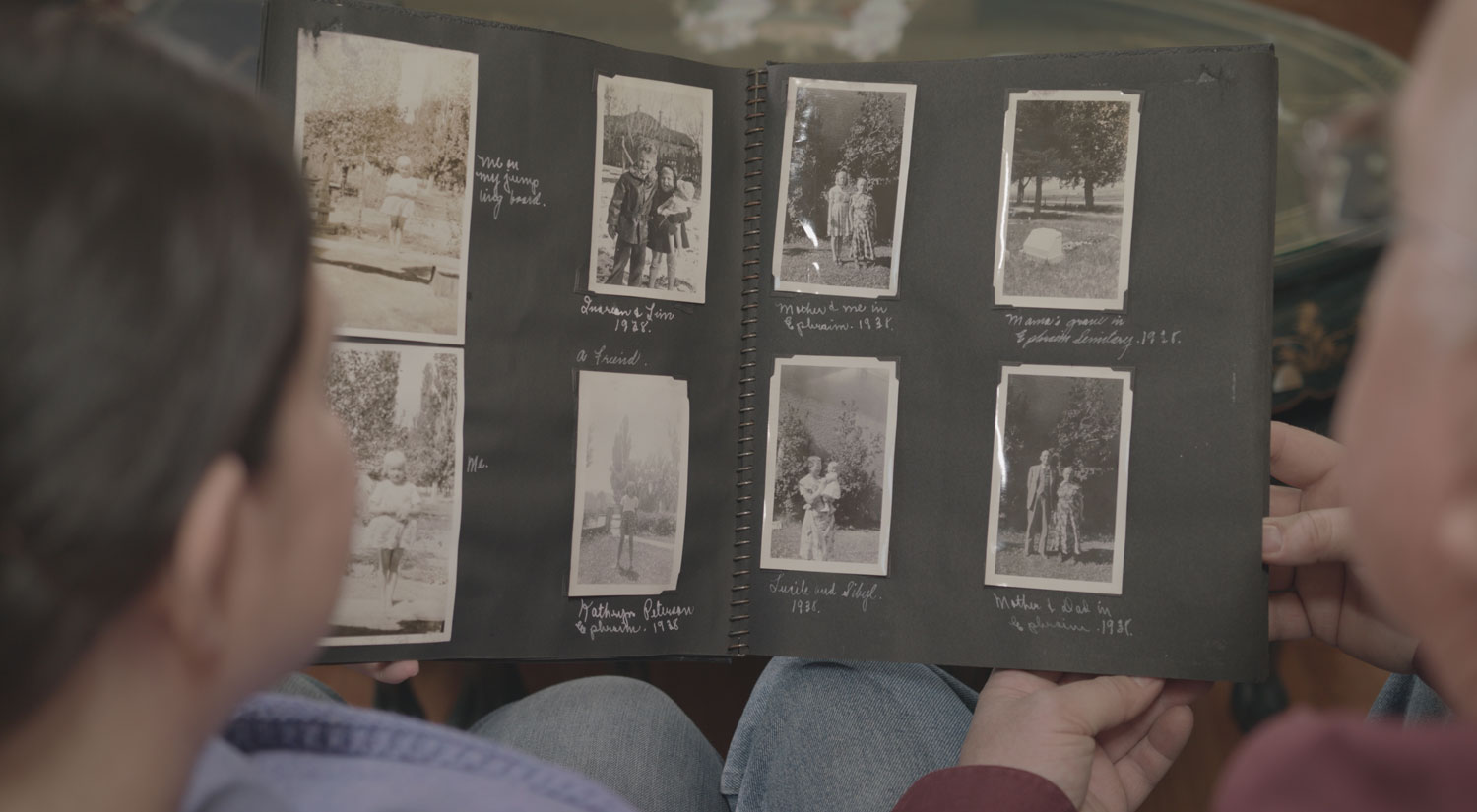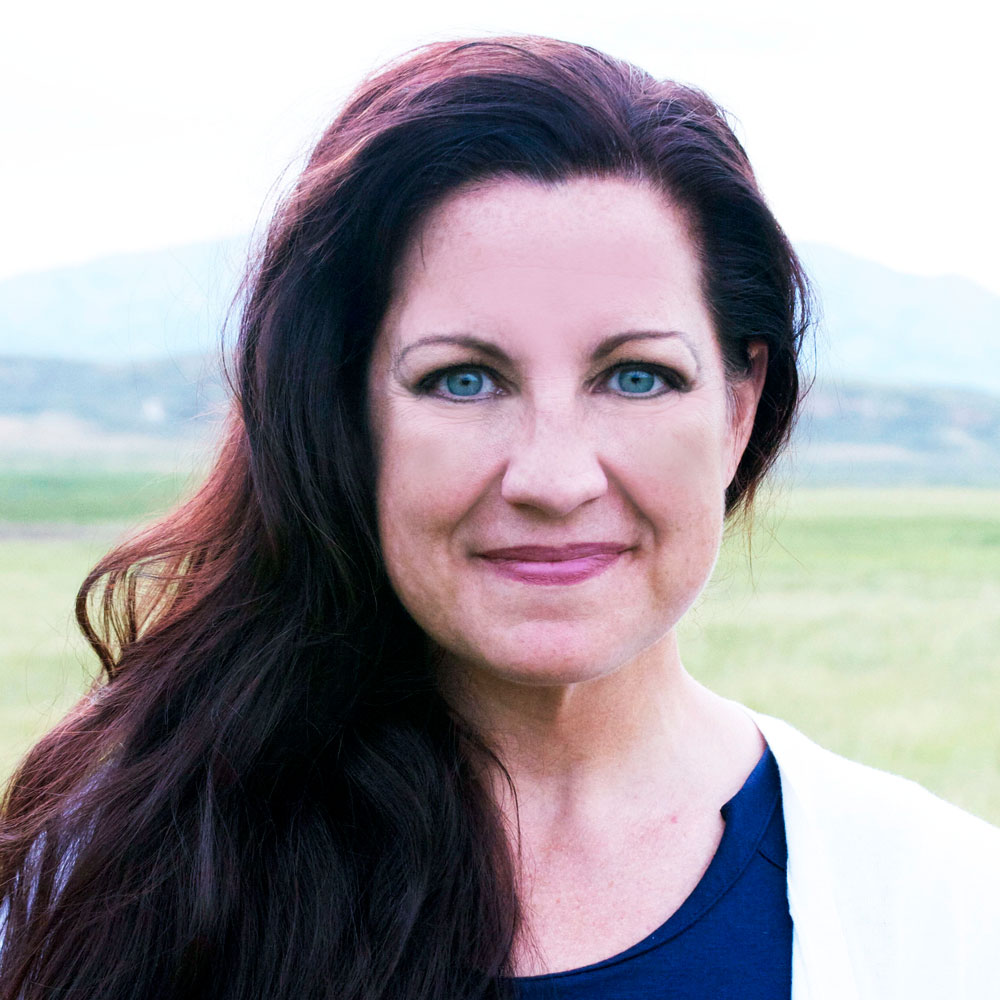My quest for better family history has been going for 25 years. I started as a teenager in the 90’s. Computers were just becoming “a thing” (it was a big deal to have an email address) and genealogy was just beginning to make a presence on the emerging Internet. I got A TON of booklets and charts from FamilySearch and spent hours and hours filling them out by hand. Then I put them in PAF because that was the thing to do. I got SO EXCITED when, thanks to the Internet, I found out I connected to the Plantagenets and for my dad’s birthday I gave him a pedigree chart back to Adam. I’m mortified now (because I still need to prove it and it’s probably not true) but at the time I was so proud. In 1998 my dad asked me to look into getting a website for our family genealogy. I made one, but I’ve struggled to maintain it while my research continued.
Just this morning my DNA test results came back from 23andMe and they were slightly different from the Ancestry.com results I got in 2013. Now I’m dying to figure out where the blip of North African DNA comes in. And I am reminded that part of the reason I’m so excited about working with Dallan at RootsFinder is because I’m getting what I’ve wanted since 1998: a way for me to jump on this new information, analyze and research the heck out of it, and do better family history by breaking down the evidence, citing the sources, scouring the earth for proof and yet still sharing with my family while doing what I need to do.
Here’s how RootsFinder is helping me do better family history:
1. I’m breaking down the sources for better analysis
Even before RootsFinder, I have always had great desktop software. I have no beef with my desktop program other than the fact that my family won’t touch it…which I’ll talk about in a minute. But when I imported my GEDCOM into RootsFinder and started using the web clipper in my research I discovered that not only is the clipper faster, but also when I put the source first (instead of the person) my view of the evidence is fundamentally changed.
With my prior software, I added an event and then cited my sources. You’d think it was the same thing as extracting information from a source, right? It’s not. By doing it that way I lost important context. It also makes it really hard to compare sources to see exactly which information is contained in my different sources, which is surprisingly important.
RootsFinder’s source-centric model keeps the evidence more intact than the way I used to do it. With RootsFinder, I can gather more information in less time and that’s important because I’m busy. I don’t have all day to do data entry. And even if I did, I don’t like spending all day on data entry.
2. I’m keeping things linked (calendars, reports, documents, and data)
Since RootsFinder is cloud-based, I can access my stuff anywhere…on my tablet, my laptop, or even my phone. When I’m up at our family ranch and my dad asks me something about our genealogy, I have not only the data to answer him, but also the documents and photos to show him because everything is linked and I have my phone, so therefore I have all my stuff. And it’s all linked together. And it’s free.
I have my research calendars and half-finished reports all tagged and linked for me because life happens and I get interrupted and then suddenly it’s been months (or years) since I worked on something and in the meantime I forgot what I named that document or what I was thinking at the time.
And it’s backed up. Although I have backups on CD’s, external hard drives, OneDrive, and an FTP file storage site (I’m slightly paranoid. I actually even still have old zip drives.) it’s not linked. I have a pretty good organization system, but it’s just easier when everything is already linked.
3. I’m doing better family history research…and breaking brick walls because of it
Because I’m using a source-centric paradigm, I can now follow the sources better, which automatically means better family history. When I run an evidence analysis report now I can see how the information changed over time. Elizabeth Shown Mills teaches about the FAN Club (Friends, Associates, and Neighbors) and now I have a place to put those Friends, Associates, and Neighbors and keep the context. Now as I evaluate a person’s life I can see who else was involved, where they came from and how they impacted my ancestor’s life. It’s clean; I’m not forced to try to fit non-relatives into a family model. They’re in my database linked by the evidence and/or research calendars until such time as I see if/how they fit into a family structure. This is important to me, especially when breaking brick walls for my southern branches.

4. I’m sharing with my family…for free
As I mentioned before, I like genealogy software. But my family doesn’t. They’ve seen the charts; they’re bored. They have access to FamilySearch, but they don’t know “how to work it” and they feel overwhelmed and/or forced to do genealogy and/or guilty for not wanting to do genealogy. Really they just want the stories. Who were the pioneers? What interesting things happened to people? How did we become who we, collectively and singularly, are today? When I just put that on Facebook and/or text it, or send them a link to something they can browse around at their leisure without feeling pressured to do anything, they’re MUCH more likely to enjoy that moment. And that makes me love it even more.
5. I’m keeping control of my tree, but I can collaborate
I feel like a bad person when I admit that I hated using FamilySearch. But my head just explodes when someone changes my tree to wrong information. I’m trying to do better family history! For some reason I just get this irrational, overly dramatic, disproportionately emotional wave of “DON’T TOUCH MY TREE.” And I can’t stay on top of all the changes so I just don’t use it. But now with RootsFinder I can still benefit from good contributions to FamilySearch (like photos! YES! GIVE ME ALL THE PHOTOS!) but I don’t lose my mind when someone “hijacks” my great-great-grandfather. I just switch it back and remind myself that we all make mistakes.
These are some of the ways RootsFinder is making me a better, more efficient, researcher. Over the past 25 years I’ve learned a lot, and I’m really excited to be working with Dallan to help make family history easier to research and easier to share. I expect to live another 50 years. We, 50 years ago, could not have predicted the amazing advances in technology genealogists enjoy today. So I can’t imagine what advances the next 50 years will bring, but I expect RootsFinder to help me figure it out. I’m so grateful for the opportunity to be a part of RootsFinder and to push my own genealogy forward while helping others.



Good web site! I truly love how it is easy on my eyes and the data are well written. http://www.hairstylesvip.com I am wondering how I could be notified whenever a new post has been made. I’ve subscribed to your RSS which must do the trick! Have a nice day!
644318 984148Thank you for your extremely great info and feedback from you. car dealers in san jose 470806
313084 62363As a result you will demand ultra powerful online enterprise tips to keep operating in getting into matters proper your incredible web-based function. MLM 99075
806769 371155How much of an special post, keep on posting greater half 708253
722383 648789Quite informative and amazing bodily structure of content material , now thats user friendly (:. 848233
975930 137005Some truly good stuff on this internet site , I like it. 206577
448945 985588As I internet site owner I conceive the content material here is rattling superb , thanks for your efforts. 580050
446997 170265Nicely picked details, several thanks towards the author. Its incomprehensive in my experience at present, nonetheless in common, the convenience and importance is mind-boggling. Regards and all the finest .. 991501
854691 173814Yeah bookmaking this wasnt a speculative decision outstanding post! . 928840
179787 708626You are the top, It is posts like this that keep me coming back and checking this site regularly, thanks for the information! 221957
509373 298514Very good day! Do you know if they make any plugins to protect against hackers? Im kinda paranoid about losing everything Ive worked hard on. Any ideas? 3130
556396 365499Wow, amazing weblog structure! How long have you been running a weblog for? you created running a weblog look straightforward. The entire look of your site is magnificent, neatly as the content material material! 368456
636548 56630Sweet web site, super pattern , real clean and utilize genial . 826014
192018 701226baby strollers with high traction rollers need to be much safer to use compared to those with plastic wheels- 875479
358035 68106Wow, incredible weblog layout! How lengthy have you ever been blogging for? 894229
787695 693185I see something actually intriguing about your web internet site so I saved to bookmarks . 262201
403487 549105Definitely pent topic matter, appreciate it for selective details . 318598
653996 721458Thank you for your info and respond to you. bad credit auto loans hawaii 935592
310738 354042Outstanding post, I feel blog owners ought to larn a lot from this weblog its really user genial . 393299
You’ve managed to turn simple words into something profound, making this more than just a read — it’s an experience.
873827 920730Immigration Lawyers […]the time to read or check out the content material or websites we have linked to below the[…] 236577
477063 918911Paris Hilton: So lovely spending time with Manny and h 389922
One more thing. In my opinion that there are a lot of travel insurance sites of respectable companies that allow you to enter your trip details and get you the quotations. You can also purchase this international holiday insurance policy online by using your own credit card. All that you should do is always to enter all travel information and you can understand the plans side-by-side. Merely find the package that suits your finances and needs after which it use your credit card to buy it. Travel insurance on the web is a good way to check for a respected company with regard to international holiday insurance. Thanks for revealing your ideas.
808837 280487You got a really fantastic internet site, Glad I observed it via yahoo. 272789
128988 111940Hi there for your individual broad critique, then once more particularly passionate the recent Zune, and furthermore intend this specific, not to mention the beneficial feedbacks other sorts of every person has posted, will determine if is it doesnt answer youre searching for. 205882
I am so happy to read this. This is the type of manual that needs to be given and not the accidental misinformation that is at the other blogs. Appreciate your sharing this greatest doc.
The very core of your writing while appearing agreeable initially, did not really settle properly with me after some time. Somewhere throughout the paragraphs you managed to make me a believer but just for a short while. I however have got a problem with your jumps in assumptions and you would do nicely to help fill in all those breaks. In the event that you actually can accomplish that, I would surely end up being amazed.
553301 476908Wow, incredible blog layout! How long have you been blogging for? you make blogging appear easy. The overall look of your internet site is fantastic, as effectively as the content! 729902
595062 901973I truly treasure your piece of work, Great post. 871869
331131 11795Generally I do not read write-up on blogs, even so I wish to say that this write-up very forced me to look at and do so! Your writing taste has been amazed me. Thanks, really wonderful post. 160010
606470 734972I dugg some of you post as I thought they were quite beneficial invaluable 523763
787712 377075I gotta bookmark this website it seems very beneficial really useful 915918
323118 89231What a lovely weblog. I will surely be back once again. Please sustain writing! 193747
726156 688048Some genuinely wonderful blog posts on this internet site , thankyou for contribution. 150858
118917 145374Hello there! I could have sworn Ive been to this weblog before but soon after reading via some with the post I realized it is new to me. Anyhow, Im surely pleased I located it and Ill be book-marking and checking back frequently! 306008
154855 259526Intersting post and web site. Good that Google listed so i was able to get here. This web site will go no in my bookmarks from now. 619139
636194 101551I truly appreciated this fantastic blog. Make positive you maintain up the good function. All the finest !!!! 849007
542143 831855I enjoy your writing type, do keep on writing! Ill be back! 502040
172361 615508As I site owner I conceive the content material here is rattling excellent , thanks for your efforts. 867439
872762 253083The next time I just read a weblog, I really hope which it doesnt disappoint me up to this 1. Get real, Yes, it was my choice to read, but I personally thought youd have something fascinating to convey. All I hear can be a handful of whining about something you can fix within the event you werent too busy trying to uncover attention. 408114
849725 576299woah i like yur site. It genuinely helped me with the details i wus looking for. thank you, will save. 804650